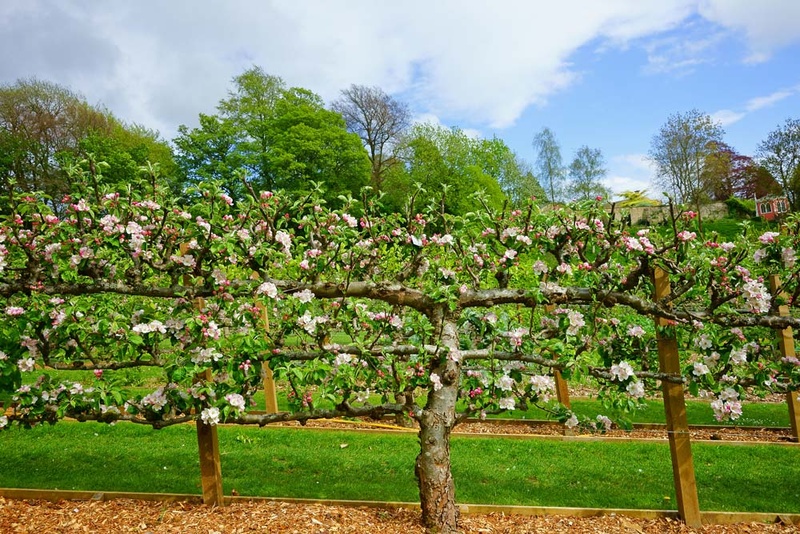
Espaliered Trees: Efficient, Functioning Art
It was the Romans who introduced espalier—the practice of training trees to grow along a flat support such as a wall or fence. Today’s homeowners can easily adopt this growing technique, which results in trees that look like art and require little space.
So you want an orchard but don’t have room in your landscape? Try espaliered trees. They’ll maximize your space and provide points of interest.
The New (Old) Orchard: Espaliered Trees
Espalier is the practice of training a tree or shrub to grow along a flat support like a wall, fence, or trellis by pruning and tying branches to a frame. The method began in ancient Rome and is most commonly used to grow fruit trees. While the word originally referred to the structure against which plants were trained to grow, it is now also used to describe the technique and the plants themselves.
Functional Art
Espaliered trees are beautiful in and of themselves but are also practical if you have a small space and dream of growing a few fruit trees or starting an orchard. By growing an espalier along a wall, you can fit a tree into a space where you wouldn’t be able to grow one normally.
If you are lacking some acreage but want a small orchard, you can create one by growing espaliered trees in rows running north to south so that they don’t shade each other. Because they are growing horizontally, you only need to plant them a few feet from each other.
What to Espalier?
While many espaliers can be grown in informal patterns (free-form designs or following their natural shapes) only some will grow in a formal pattern (think symmetrical). Formal patterns include those with horizontal branches, upward slanting branches, and U-shape variations.
The best fruit trees to espalier in Central Florida are citrus, loquat, or Natal plum, but only the loquat will most naturally follow a formal pattern. In a small space, dwarf trees will work best; if you only have room for one, make sure it’s self-pollinating! Of course, you can also espalier plants that are simply decorative, such as the crape myrtle, creeping fig, or jasmine.
Where and How to Plant Your Espaliers
Now, this sounds and looks fancy but the process is quite simple as long as you keep up with it! We’re going to explain how to grow an espaliered tree in a formal pattern.
First, choose where to grow your tree. You’ll need 8 linear feet and a space that receives full sun (a south-facing wall is perfect).
Use an existing support like a fence or wall or build your own free-standing support to create a natural fence. Either way, you’ll need a framework if you’re following a formal pattern, using posts or sturdy stakes and taut wire stretched between them. Stretch multiple wires horizontally between your stakes, spaced 16 inches apart.
Plant your tree 6-8 inches from the flat surface you’ve chosen. Carefully bend existing branches to follow your chosen pattern and secure them with plant ties.
Remove any unwanted branches and trim the center trunk 1-2 inches above the first wire, leaving at least three buds below your cut. This will cause new branches to grow at this height, at which point you’ll secure them and they will continue to grow along the wire. As the plant grows, continue tying branches to the framework and pruning ones that are growing outward from the flat surface or beyond your pattern boundaries.
Pay attention and keep on pruning, and before you know it you’ll be amazed at the beauty and functionality of your espaliered trees.